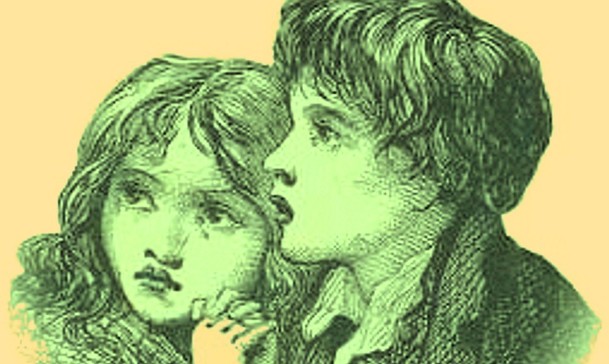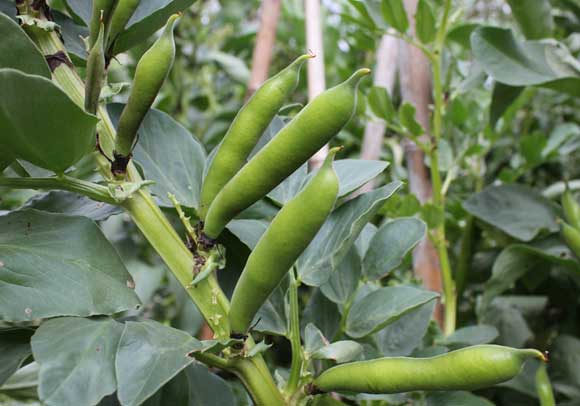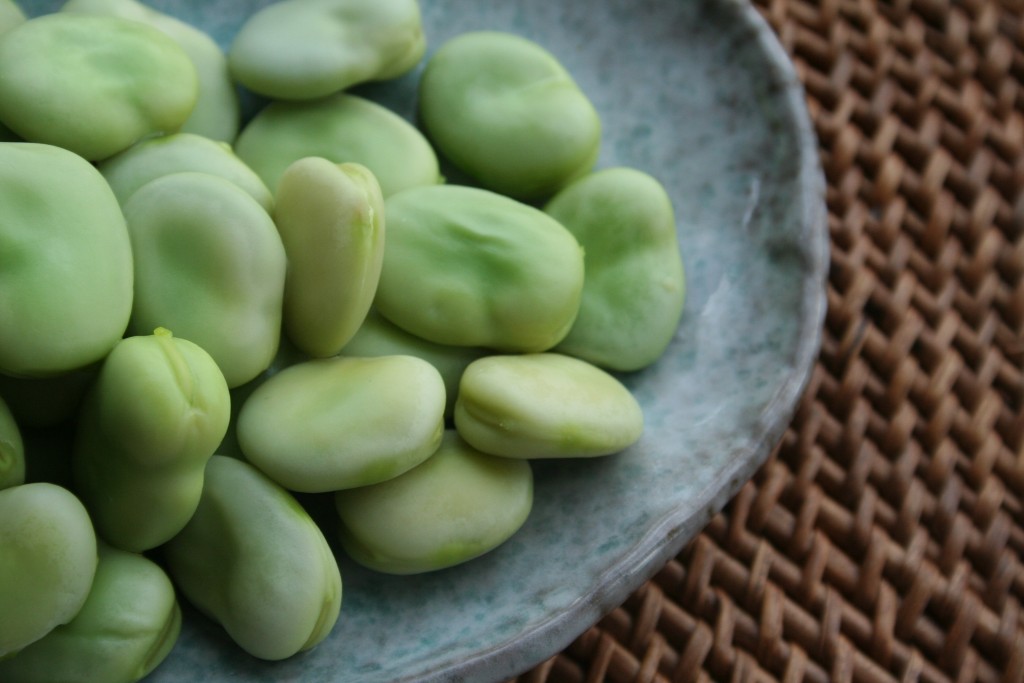Green Children of Woolpit 4: Why Bean Stalks? January 25, 2015
Author: Beach Combing | in : Medieval , trackbackThe fourth and final post on the green children of Woolpit and this time the mystery of the beans. First, William: ‘Cum ergo inedia iam paene deficerent, nec tamen aliquid ciborum, qui offerebantur, attenderent, forte ex agro contigit fabas inferri, quas illico arripientes, legumen ipsum in thyrsis quaesierunt, et nihil in concavitate thyrsorum invenientes amare fleverunt. Tunc quidam eorum qui aderant, legumen ex corticibus erutum porrexit eis, quod statim libenter acceptum comederunt.’ In John Clark’s translation: ‘Now when they were almost dying of starvation but would not take any of the food they were offered, it happened that by chance some beans were brought in from the fields. They seized them and looked for the beans inside the stems; when they found nothing in the hollow of the stems they wept bitterly. Then one of those who were present took the beans out of the pods and offered them to the children. At once they took them happily and ate them.’ Now Ralph with JC’s translation: ‘Tandem cum fabae noviter cum stipitibus abscissae in domo asportarentur, cum maxima aviditate innuerunt ut de fabis illis sibi daretur. Quae coram eis allatae, stipites aperiunt, non fabarum folliculos, putantes in concavitate stipitum fabas contineri. Sed fabis in stipitibus non inventis, iterum flere coeperunt. Quod ubi astantes animadverterunt, folliculos aperiunt, fabas nudas ostendunt, ostensis cum magna hilaritate vescuntur, nulla alia cibaria ex multo tempore penitus contingentes.’ ‘At last when some beans, newly cut with their stalks on, were carried into the house, they made signs with great eagerness that some of the beans should be given to them. When the beans were brought, they opened the stalks, not the bean pods, thinking that the beans were contained in the hollow of the stalks. But when they didn’t find beans in the stalks they began to cry again. When the bystanders noticed this, they opened the pods and showed them the naked beans. Once they were shown them, they ate them with great joy, and would touch no other food at all for a long time.’
JC suggests that the fabae or legumenes described here are what in modern British English would be termed broad beans: this is almost certainly correct. As Beach doesn’t spend much time in the garden he has put here three pictures. Broad beans on the stalk, broad beans in the pod, and broad beans out of the pod. Reading and rereading this the locals evidently brought in a cut (or potted?!) broad bean plant. The children tried to take food from the plant by breaking open the stalk. They found nothing and at this point the locals opened the pods and gave them the beans that they joyfully ate. When Beach first read this he found the episode absolutely absurd. Why would anyone break open a stalk of a broad bean: but looking at the picture above the stalks are substantial. Is there some kind of plant like this that contains beans or some other kind of sustenance?
This is admittedly a modest problem compared to the textual confusion behind Ralph and William’s work, nevermind the question of green skin but can anyone suggest what is going on here. It is interesting that both Ralph, William and their putative source felt that it was important to record this episode in great even suprising detail. drbeachcombing AT yahoo DOT com
Note JC quotes, though has little patience with the idea that beans were food of the dead: this came originally from the late great Katharine Briggs.






